ISTITUTO STATALE "E. MONTALE" - PONTEDERA
ON THE MOVE AROUND
EUROPE
Progetto Comenius_1
Profilo I meetings si sono svolti a turno
nelle seguenti nazioni: Portogallo e Germania il primo anno, Italia e Norvegia il
secondo anno, Svezia e prossimamente Olanda il terzo anno. Prodotti realizzati |
ON
THE MOVE AROUND EUROPE
Comenius_1 – Anno scolastico 2006/2007
Classe 4^ CL, Prof.ssa Maria Cristina Dal Canto, Ass. tecnico Gigliola Frosali
...in preparazione ...work in progress
ON THE MOVE AROUND
EUROPE
Comenius_1 – Anno scolastico 2005/2006
Classe 3^ CL, Prof.ssa Maria Cristina Dal Canto, Ass. tecnico Gigliola Frosali
SCHOOL, FAMILY,
FASHION AND LEISURE IN 2005
http://www.onthemovearoundeurope.org
![]()
![]()
![]()
![]()
![]()
![]()
![]()
![]()
ON THE MOVE AROUND EUROPE
SCHOOL IN 1900
These are the milestones of the Italian school system:
1904 schooling became compulsory until the age of 11
1923 schooling was compulsory until the age of 14
1997 schooling was compulsory until the age of 15
2005 schooling is compulsory until the second year of high school and in any case it is established that those who decide to leave school
and start a job must attend special courses, organized especially for them, until the age
of 18. In spite of these laws, at the
beginning of the 20th century just few
children attended schools. Poor families thought that going to school was a useless luxury
which only the rich could afford. Sometimes also buying the school equipment was too
expensive for them, even if it consisted of very few items. As a result the number of
adults who could neither read or write was extremely high. So when they got a letter they
had to ask someone to read it for them and they generally asked one of the young people
who had been lucky to go to school.
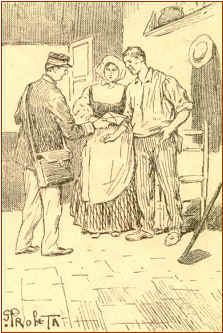
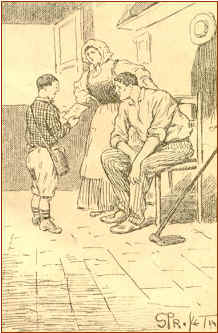
Those who could go to school, often stayed at home to help
their families in the hard work of farming, so their attendance became sporadic especially
at harvest time in spring and summer. On the days they went to school they started lessons
being already tired because of all the small jobs they had already done before leaving
home, such as drawing water from the public fountain, feeding the fowl or milking a cow.
In our local area there were also some family industries manufacturing ropes, bricks and
clogs. They employed young children too, so the total number of pupils attending school
was extremely low.
Coeducational schools did not exist. All primary schools classes were quite big and each
of them had one teacher.
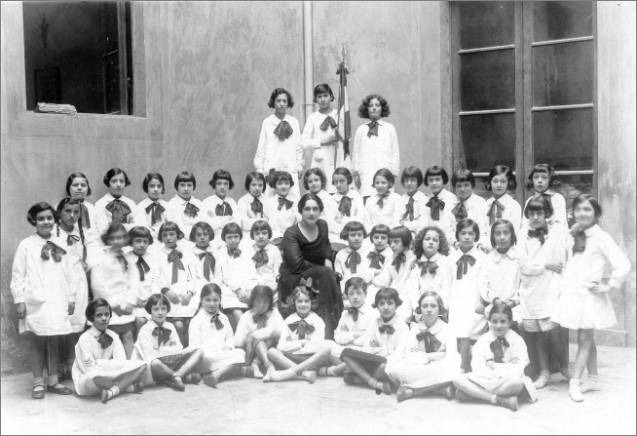
Children had to wear a uniform, which was always made up of
a black shirt and a pair of shorts for boys, while for girls it might be either a white or
a black overall dress. When a photo of the whole class was taken one of the children had
to hold the national flag, as a sign of patriotism.
A school day lasted about four hours and a half which included four subjects and half an
hour break. Sometimes, when the weather was nice, lessons were held outside on the grass.
The desks were made of wood.
The school equipment consisted of very few things such as a cardboard school bag
containing an ink-pen with a couple of nibs, an inkpot, a single book and an exercise-book
which was always black, with a white label on the front cover where the child wrote his
name.
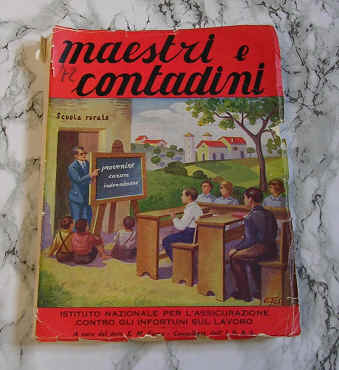
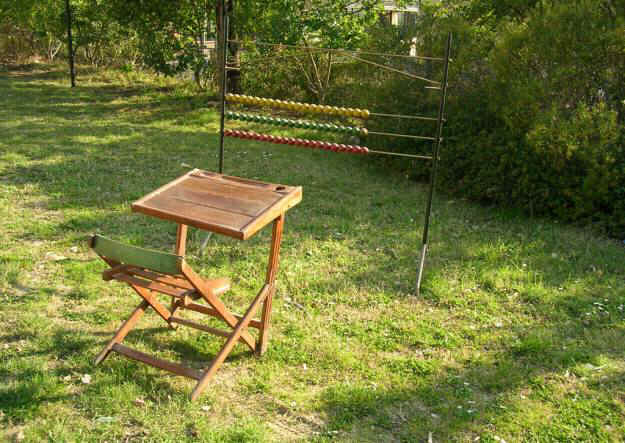
Some school subjects are still part of our curriculum such
as Italian, Arithmetic, History and Geography, but they also had a few more which have
gradually disappeared like Handwriting, Dictation, Reading, Sums and, especially for
girls, Needle Work or Knitting.
The relationship with the teacher was generally good, although discipline was quite strict
and pupils were punished whenever they did not conform to the school rules. Being a
teacher was seen as a sort of humanitarian mission and as a matter of fact teachers were
happy with their job and enjoyed a high reputation in the local community where they often
became contact persons together with the priest and the chemist.
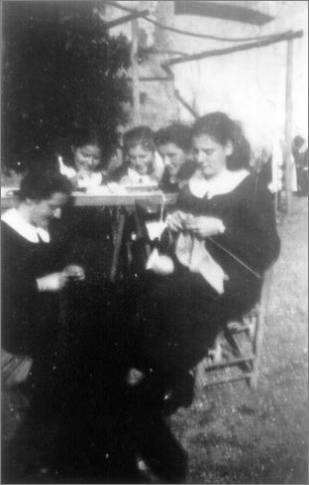
FAMILY IN 1900
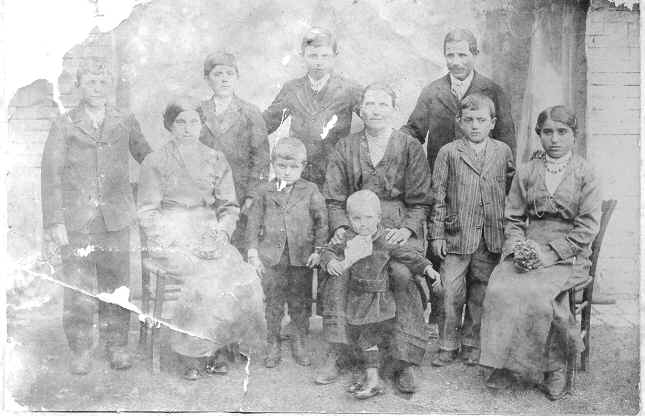
At the
beginning of the 20th century families were very big, with lots of children.
They used to live all together, parents, grandparents, children and other relatives.
Children were considered as a blessing from God both in middle class families and in poor
families where they contributed to the whole income of the family since they were fairly
young. Being an only child was extremely unusual. Children were often named following the
sequence of their birth. For example in a family with eleven children they might have
being called:
Primo (First) who was the brother of Seconda (Second ) who was the sister of
Terzilia (Third ) the daughter who was the sister of
Quarto (Fourth) the son who was the brother of
Quintilia (Fifth) the daughter who was the sister of
Sestilia (Sixth) who was the sister of
Settimo (Seventh) who was the brother of
Ottavia (Eighth) who was the sister of
Nona (Ninth) who was the sister of
Decimo (Tenth) who was the brother of
Ultimo (hopefully the Last child !!! )
For such a big group it was necessary to have an absolute leader who was always the oldest man in the family. He enjoyed undiscussed prestige, he kept the money of the family and decided how much of it could be spent and when. Women had an ancillary role and never opposed their husbands’ decisions. They had no possessions at all. They were given a dowry by their father, but after their marriage it passed under the control of their husbands. The father decided about the future of his daughters. Most of them got married and had children. Those who did not marry stayed in their home family and gave their own contribution to it, while a few girls had to become nuns and live in a monastery. In any case single women were not allowed to live on their own, but they lived as aunts in the big family.
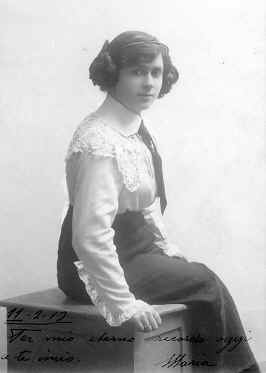
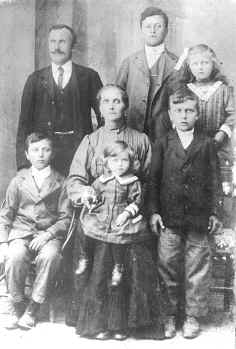
Those who had
a married life had not necessarily chosen their own husband. Marriage, in fact, was often
arranged by parents. However there were also girls who loved their fiancé, like the girl
in this picture. She was called Marianna and was the great-grandmother of one of us. She
sent the photo as a sign of her love to Adolfo. At the bottom of the photo she wrote a
dedication “ Per mio eterno ricordo oggi a te invio” which in English reads
“ I wish you will always remember me”.
Generally speaking we can say that family ties were very strong. The union of the family
was based on the feeling of respect and submission to the hierarchical order of its
members, thus the words "separation" and "divorce" were unknown.
For a long time over the past century the family was seen as a fundamental institution,
with a specific social function, that of growing up “honest and good” citizens.
Besides it was a productive source, being able to produce what was needed by its members
who contributed to the productive process.
This model of family characterized social life in the first half of the 20th
century. Then, after the second world war, things gradually changed and the family turned
from a centre of production into a centre of consumption. The immediate effect was a
drastic reduction of the number of its members in order to provide a higher and higher
quality of life. That is the reason why in the last decades we have got to the nuclear
family, made up of three people, the parents and one child, or four people at the most.
Also the roles inside the family have deeply changed with the emancipation of both women
and children, whose rights are now unquestioned.
The old principles of authoritarianism and submission which characterized traditional
relationships have been substituted with a feeling of mutual respect and equal freedom.
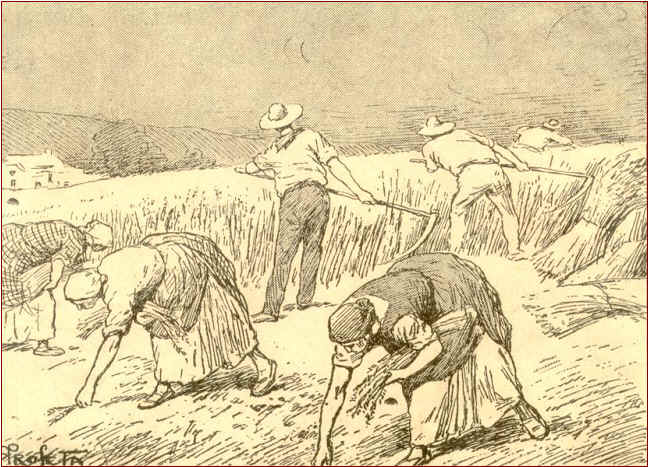
Our grandparents used to eat what they produced on their
farms. In summer they picked fruit and made delicious jams with peaches, apricots, plums,
pears and figs. In their orchards they grew a lot of vegetables such as cabbages, beans,
peas, tomatoes potatoes, artichokes, onions, and fennel. They made their own olive oil and
wine. They were very proud of it and they always thought that their wine was the best one.
As for water, of course it was not available directly from taps, so the luckiest people
drew it from their own well, while the others had to get it from public fountains, then
they carried it home with very heavy buckets and kept it in copper water-jugs. Having
these jugs polished and bright was the women’s pride.
At that time meat was very expensive. Those who lived in the country could rear their
cattle, and fowl, they also had pigs, and rabbits. Roasted rabbit meat with potatoes was a
dainty dish. But they ate meat only once a week generally on Sunday or on special
occasions which were generally connected with religious feasts.
They got eggs from the hens and milk from the sheep. Some farmers were able to make cheese
and butter.
Also bread was homemade, but only once a week. Our grandparents did not eat so much pasta
as we do today, they often had soups made with vegetables and bread or with wheat and corn
flour. They had never heard of pizza, hamburger, chips, or Coca. They ignored words such
as Smarties, Marsh or KitKat. Although they were almost self sufficient, they still had to
buy some basic things such as salt and sugar. To get some money they sold their cattle and
the spare products of their farm. Once a week there was the cattle market which was held
in the biggest village of the local area. There they could find what they needed. It is
curious to know that the goods which are now sold in ready made packages, at that time
were sold in bulk even for small quantities, such as 100 grams of salt, or 300 grams of
sugar, which shows that most people did not have much money to spend.
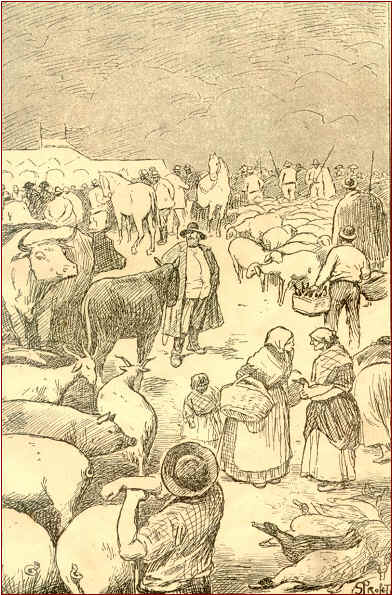
FASHION IN 1900
In the first
half of the last century the gap between social classes was very deep. The poor and the
rich had completely different lifestyles. And also living in the countryside was quite
different from living in towns.
The way
people used to dress was a mirror of their lifestyle.
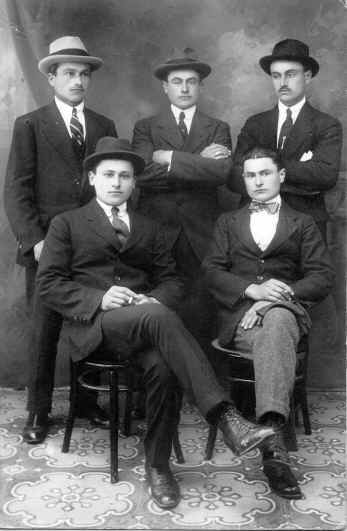
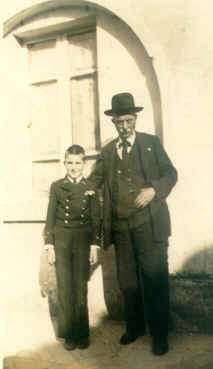
However there
were some basic rules followed by everybody. For
example women were expected to have long hair fastened in buns. Trousers were not right
for them, only long skirts were considered
proper. All men used to wear a hat and on formal occasions they wore a dark suit with a
waistcoat and a pocket watch. On these occasions also children were expected to wear a
jacket, sometimes in a military style, and a pair of long
trousers, while on week days they used to wear shorts, even if it was cold
in winter.
Most of the
people who lived in Tuscany were poor farmers who could not afford expensive clothes, so
they wore very ordinary ones which were always the same day after day and put on the fine outfit on Sundays to go to church.
They had only one pair of black leather shoes for winter and clogs for summer. When they
needed mending they were taken to the cobbler. Buying a new pair of shoes was seen as an
important event which had to be planned beforehand. Clothes were mended too. Holes were
covered with patches and the worn out material was put upside down and tailored again.
Every single item was handmade, even socks were knitted. Nothing was ever thrown away, but
shoes and clothes were handed down from the eldest to the youngest members of the family.
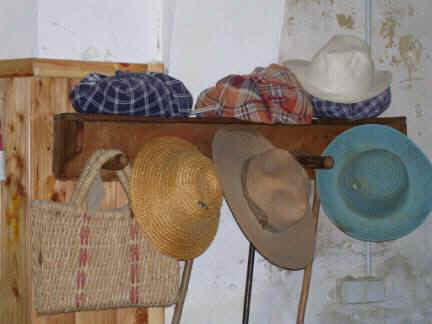
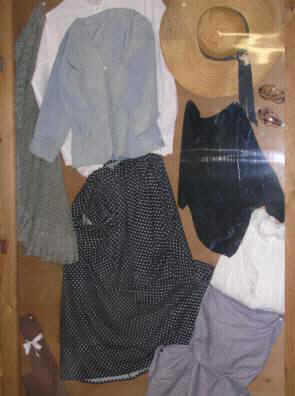
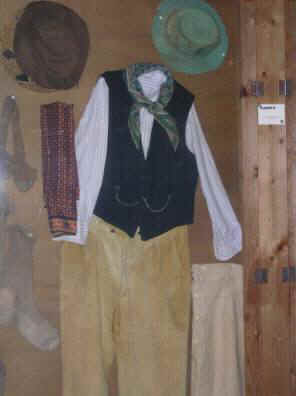
Those who
lived in the country used to wear hats made of straw or of chequered cotton fabrics. Men
belonging to the upper classes used straw hats for everyday walks and silk-hats on special
occasions.
Women who
belonged to the rich families could afford very expensive clothes, made of precious
material in a fashionable style. They had the opportunity
to wear them to go to the theatre or to a party.
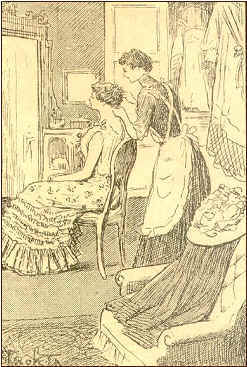
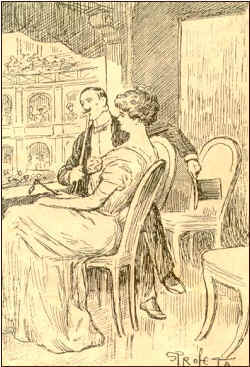
After the second world war things gradually changed. Some families belonging to the middle class could afford short holidays to the mountains or to the seaside. At that time sportswear was at the very beginning. It is interesting to see what a ski outfit looked like in the 30s, and what swimming costumes looked like in the same period.
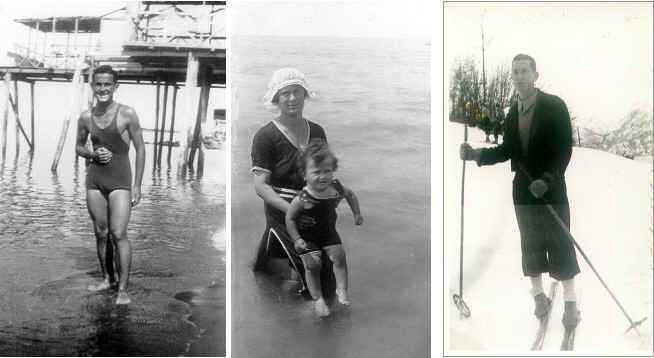
There was a widespread sense of public decency which prevented people from being undressed, even if they were going to go for a swim or they were relaxing on the beach.
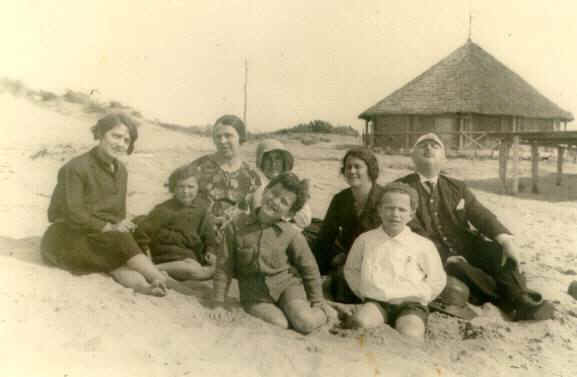
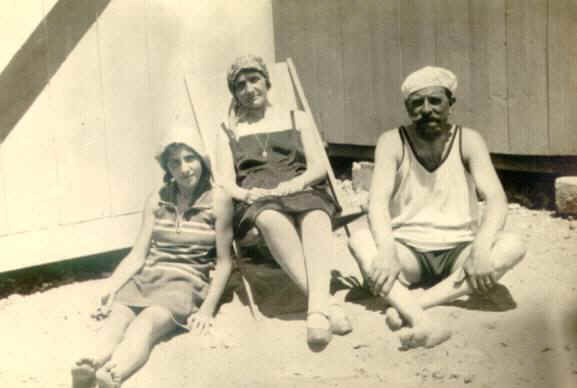
LEISURE IN 1900
Christmas and Easter in the past were first of all religious feasts which were
celebrated according to the Catholic tradition. The idea of going on holiday was not part
of common people’s life. Usually they did not move from their own place, but they
stayed at home and went to church to celebrate either Jesus Christ’ birth, or his
death. There were several religious services also in the weeks before each feast, which
helped people to prepare their souls for the great days. The preparatory period before
Christmas was called “Advent”,
while before Easter it was “Lent”. Basically they were periods devoted to
prayers and sacrifices, so that when Christmas and Easter finally arrived it was an
outburst of real happiness. On these days there was a warm and cheerful atmosphere all
around the family household. Although there were no Christmas threes, nor special
decoration or shining lights, all the same a feeling of joy and happiness was in the air.
Eventually all the members of the family could enjoy a restful day after months of hard
work. Women spent long hours at cooking, so a good smell of tasty food was spread all
over. At last, after months of scanty food, now there was plenty for all.
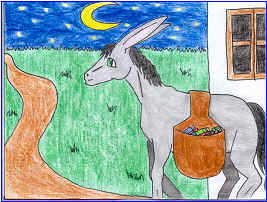
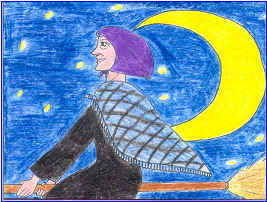
On Christmas eve they used to go to bed later that usual. After dinner they sat all around the big fireplace in the kitchen and the grandfather told stories. Meanwhile they ate chestnuts and drank wine. Children were very thrilled at the idea that the next morning they would probably find some presents for them on the hob of the fireplace. It was said that at night “Il ciuchino”, a mysterious little donkey, would call at each house to deliver presents for the good children and pieces of coal or corn grains for the bad ones. So they left a loaf of bread and some oranges or tangerines as food for the donkey in order to get into its good graces. At that time the figure of Santa Claus did not exist in our culture. Instead of him we had a nice old woman, called “La Befana” , who was a sort of good witch flying astride a broom. Children believed that also this ugly but generous old woman visited their houses at night to bring them Christmas presents.
OLD TOYS
At Christmas and Easter children could eventually play. Usually they did not play as
much as they do today. Those who lived in the country used to help their parents in the
fields or looked after the animals on the farm. But
sometimes they had some free time. Then they liked playing with their brothers and sisters
and also with children who lived in the nearby farmhouses. They played in the open, since at that time there was no place inside for
them to have fun. No video-games, no computer games, no television, no CD players. And,
above all, toy shops did not exist, so children made their own toys by themselves.
Sometimes they were helped by their elder brothers or by their friends. Adults did not
know that playing was fundamental for children and they often thought it was just a waste
of time.
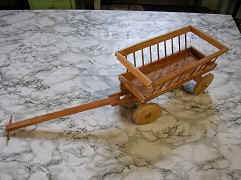
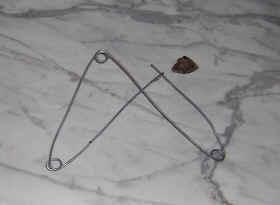
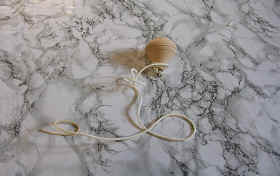
Very common objects were used to make toys, such as nuts,
the fruits of pine-trees, and reeds, pieces
of wood, and straw. Also old pieces of cloths could be
stuck together and become nice dolls. We have visited Walter Danesi’s small museum at
Carrara. Here he keeps all the toys of his childhood.
He showed us some of them which looked like the ancestors of today’s toys such as the
whirligig and the gun. The former made of a piece of carved wood pinned on a nail and the
latter made of a piece of iron wire banded in a way to spring into action and shoot a
piece of orange skin as a bullet.
We tried to play with them and it was great fun. Here are some shots for you.
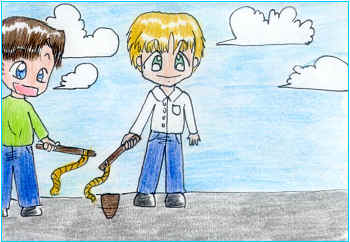
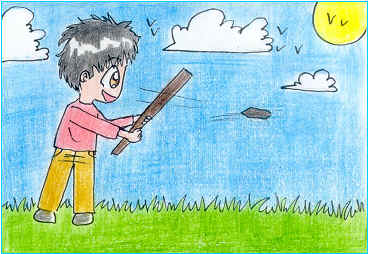
Lisa played with Walter who taught her how to cast a rope under a whirligig while it was spinning on the table.
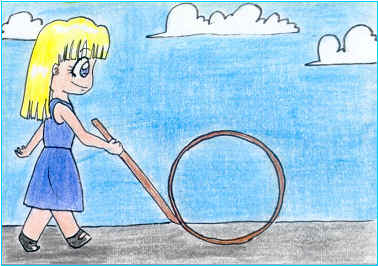
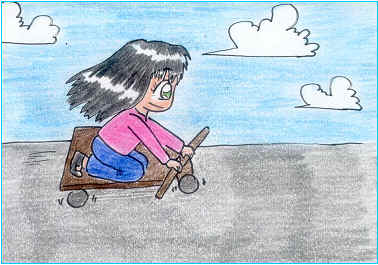
Laura enjoyed herself by pushing a metal wheel made of a spare
part of an old bicycle with a stick. Vanessa went on a wooden cart. Walter told us that
children used to climb up a hill pulling their own cart and after they had got to the top
they ventured down at great speed, gliding on the grass.
When we went back to school Giulia wanted to reproduce with some drawings the nicest toys which had struck her fantasy.